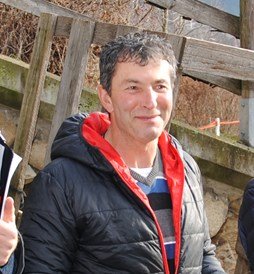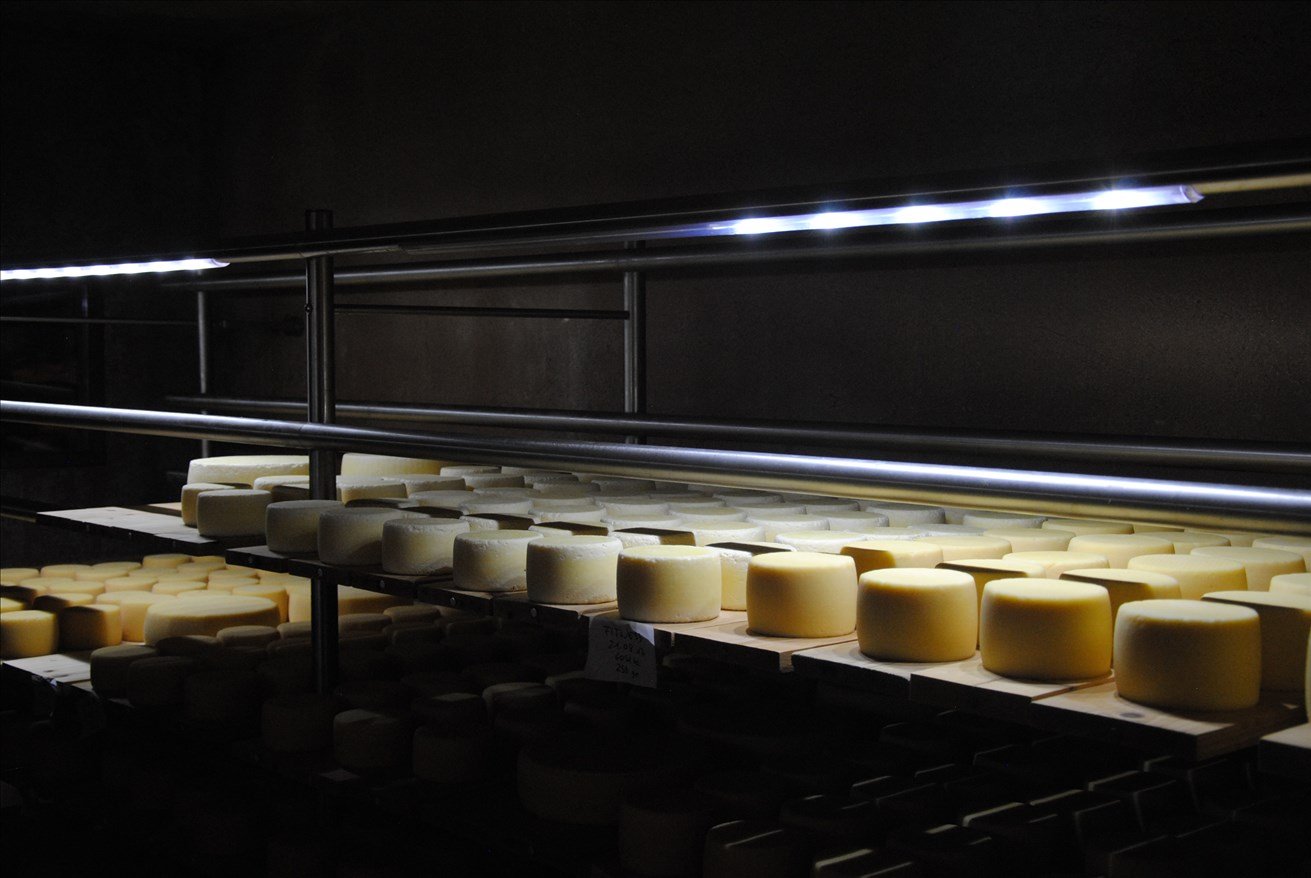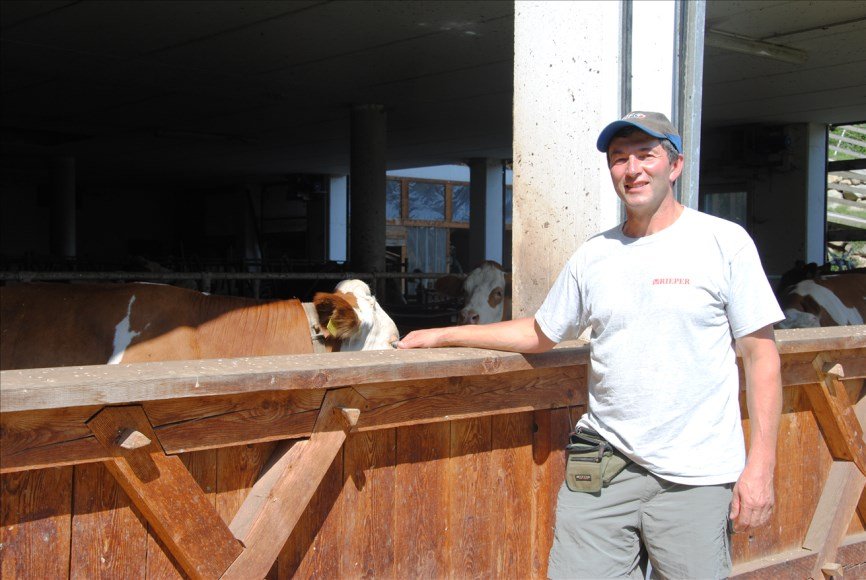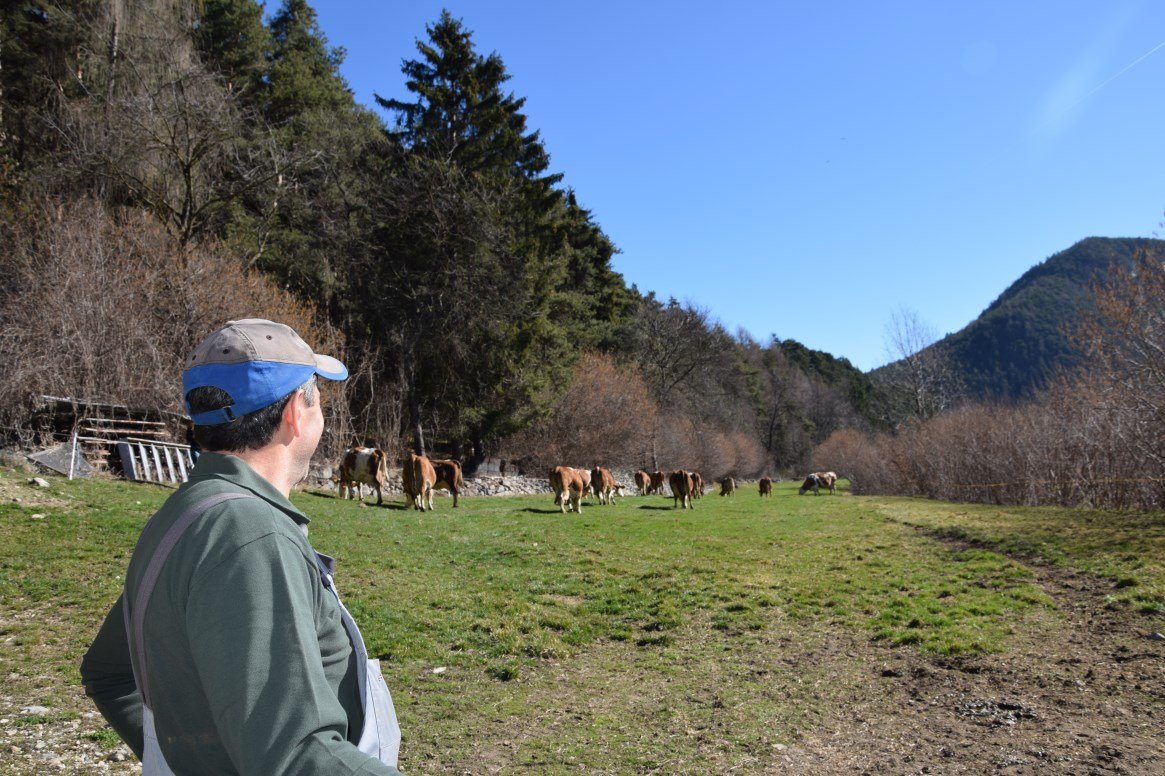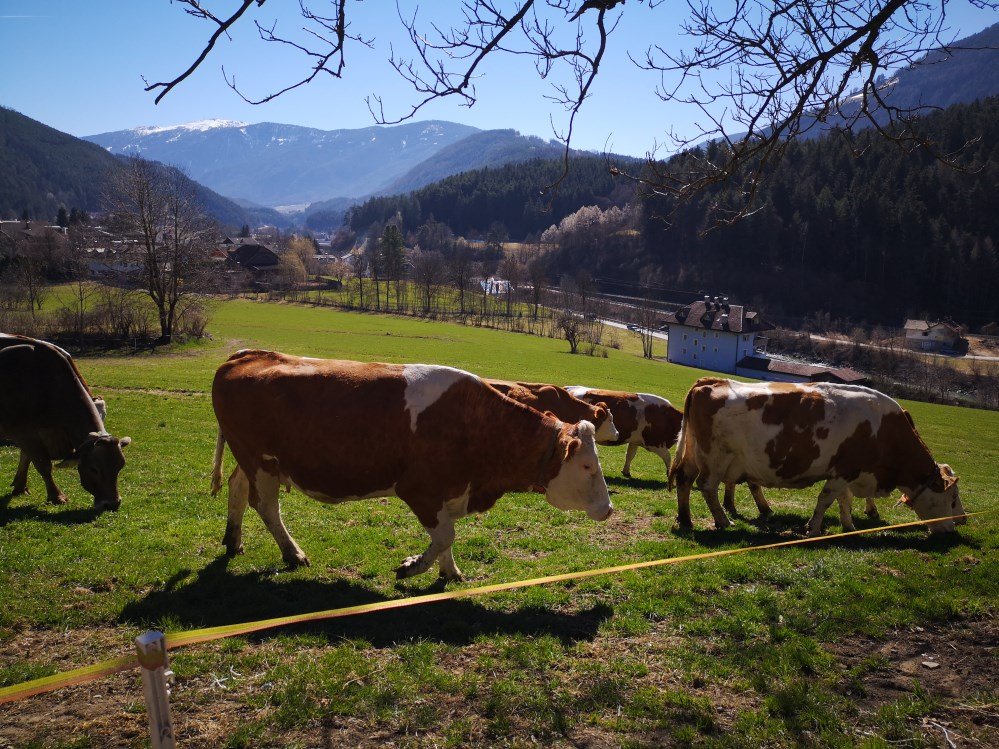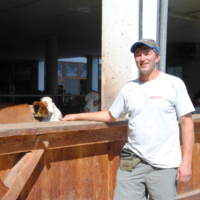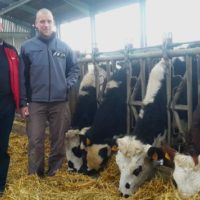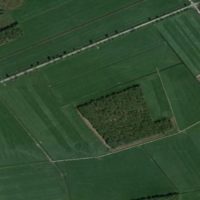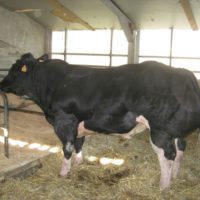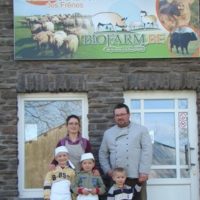Short sward grazing (Kurzrasenweide) with dairy cows and regional marketing of products
Gatscherhof, Josef Innerhofer
Innovation Analysis
 Short sward grazing (Kurzrasenweide) with dairy cows and regional marketing of products (.pdf)
Short sward grazing (Kurzrasenweide) with dairy cows and regional marketing of products (.pdf)
 Kurzrasenweide mit Milchrindern Regionale Vermarktung von Milchprodukten (.pdf)
Kurzrasenweide mit Milchrindern Regionale Vermarktung von Milchprodukten (.pdf)
Description
The innovation at a glance
Strengths
- The conversion of barn and stall was carefully considered and cost-efficiently designed; the farmer himself also contributed to the concept
- The forage drying process in the barn is fine-tuned based on short-term weather forecasts
- Grazing makes the village and landscape more attractive, especially for tourism
- Professional direct marketing of self-produced, high-quality and regional quality products
- The authenticity of the farm is the basis of a well working local marketing concept through close cooperation with gastronomy (village bakery) and hotels as well as through guided farm tours for the local inhabitants and tourists, whereby a connection to the local agriculture is established
- The location close to the main road makes the farm easily accessible for customers of the farm shop, but also for regional customers
- The village image is enriched by products from the village
- The cheese dairy creates employment opportunities in the village
Prerequisites/weaknesses
- Competence, motivation and conviction of one’s own way of doing business are necessary
- Great commitment and dedication are required to master the entrepreneurial and agricultural tasks
- The part-time job increases the workload
- The short sward grazing system requires a professional management with quick reaction to the weather conditions as well as a good knowledge of the farm and its areas
- There are currently no targeted public payments for grazing
- Selection of suitable cattle breeds for grazing is necessary; focus on robust animals and understanding for reduced individual milk yields
- Sufficient not to steep grazing areas located around the farm necessary
- The farmer does not own the whole grazing area, but has leased part of it. This represents an uncertainty for the future concerning their renewing; furthermore, the possibilities for expansion are limited
- Professional design of the sales and processing rooms for the marketing in the farm shop and for the guided tours at the farm
- Due to the farm tours, safety measures are required such as fall protection in the barn
A deeper insight
Economic factors
Prerequisites/weaknesses
- Good accessibility of the farm is necessary for direct marketing in the farm shop
- The entrance to the farm is not so clearly visible due to the legal requirements regarding road signs
- Membership of the Roter Hahn (quality label of South Tyrol certifying authentic, agricultural, high-quality farm products and farm holidays) has a positive effect on marketing
- Working on the family business and on the other part-time job results in a high workload
- Leased land represents a risk for the future
Strengths
- A functioning regional marketing chain has a positive influence on village and tourism
- Instead of a single, large customer, there are several small, regional customers; this reduces the risk of sale problems in the event of the loss of a customer
- The products are also sold in the village bakery, which means that genuine 0-km products can be offered in the village
- The short sward grazing guarantees a high forage quality
- The level of off-farm forage purchases per animal has been reduced by grazing
- The level of external forage purchases per animal kept has been reduced by grazing
- Since grazing reduces the effort of forage production and less slurry is distributed, this results in a reduction of workload and machine and equipment hours are reduced
- Reduced concentrate requirements (especially during the grazing season) make the farm less dependent on fluctuations of concentrate prices
Social factors
Prerequisites/weaknesses
- To maintain the necessary grazing areas, a good social network is required to conclude and maintain long-term leases
- The family business limits the farmer’s free time
- Scepticism from outside (other farmers and non-farmers), which is why awareness raising for grazing is necessary
- Little opportunity for knowledge exchange with other farmers implementing grazing, as grazing is carried out on only a few farms
Strengths
- The well-functioning social network enables the conclusion of the necessary lease agreements
- Partially inter-farm cooperation based on trust with neighbours (e.g. haybaler)
- The cheese dairy creates jobs in the village
- Cooperation with the village and tourism establishes a connection to the local agriculture and to the regional, high-quality products, enriches the village and enhances also through the farm tours the tourism in the village
- Individuality of the farm and the own manufactured products
- Since grazing reduces the distribution of slurry (some fertilization is carried out by grazing animals, partly continuous grazing makes fertilization more difficult during the vegetation period), the odour nuisance caused by slurry, which is considered negative by the village population, is reduced
Environmental factors
Prerequisites/weaknesses
- Sufficient grazing areas located near the farm are necessary
- Cattle breeds adapted to grazing
- Adequate nutrient supply only with farm fertilisers is problematic for short sward grazing:
- The animals graze on the whole area during the entire vegetation period and the fencing of partial areas for fertilisation is expensive;
- Fertilisation during the vegetation period depends on the vegetation and the weather;
- The time available for fertilisation in autumn between the end of the grazing season and the start of the ban on fertilisation (December 01.) as well as the end of the ban on fertilisation (end of February) and the start of the grazing season may be short depending on the weather conditions
- Dilution of slurry for improved distribution and reduced odour nuisance is advisable
Strengths
- The reduced purchase of concentrates has a positive effect on the nutrient cycle of the farm
- Reduction of plastic waste by filling the yoghurt into glasses
- Reduced diesel and electricity requirements (fine-tuning of the hay drying process depending on weather forecasts; the glass roof of the photovoltaic system heats the air underneath and the roof extraction system uses it for hay drying), reduced concentrate purchases per animal and shorter transport distances are positive factors for the CO2 balance
- In comparison to farms with indoor housing, grazing in the summer months reduces to a certain extent the need for fertiliser application
- The animals have free access to stall and grazing areas from spring to autumn (i.e. if they need shade)
- Grazing has led to improved fertility management, especially as the symptoms of oestrus are more easily recognisable for the farmer
Technological factors
Prerequisites/weaknesses
- Knowledge is required to control the drying process depending on the weather conditions
Strengths
- The concept for the adaptation of the stall and the barn was well thought
- Investments have been made in a targeted manner
- Reduced use of machineries
- The milk is processed directly on the farm
Legal factors
Prerequisites/weaknesses
- The definition of pasture is problematic in the case of subsidies, as intensive pasture farming is not taken into account there
Political factors
Prerequisites/weaknesses
- Cooperation between municipality and agricultural office can be improved
- The minimum mowing, it means one cut of all areas, is a prerequisite for measure 10 Agri-environment and climate measure of the Rural Development Programme and thus for the maintenance of EU supports. However, this requirement is difficult to meet in the case of grazing and can be a critical point in the case of controls. Possible solutions would be the recognition of the cleaning cut in the short sward grazing as a cut or a differentiation between extensive grazing and intensive short sward grazing, so that the intensive grazing is eligible for payments
What the innovator says about his innovation
Would you do it again?
Yes, I would do it again under these conditions.
What would you do differently?
I would first inform myself better and obtain knowledge from competent scientific institutions and extension services. A better information base and help from outside would have made some mistakes avoidable.
I think that the farms could be more open-minded and the marketing could be improved, whereby higher prices could be obtained. It should also be a story and not just the product itself to be sold.
Would there be enough market available in your village for three other farmers implementing your innovation?
Yes, the implementation of a short sward grazing would certainly also be possible for other farmers. But there is also potential in direct marketing, because there are very few direct marketers in the lower Puster Valley and I think that diversity is always good.
Additional information
| Farming system | conventional farming |
|---|---|
| Domains of innovation | grazing management system, marketing |
| Main types of animal | dairy cattle |
| Country | Italy |
| Product type | Innovation analysis |
| Language | English, German |

